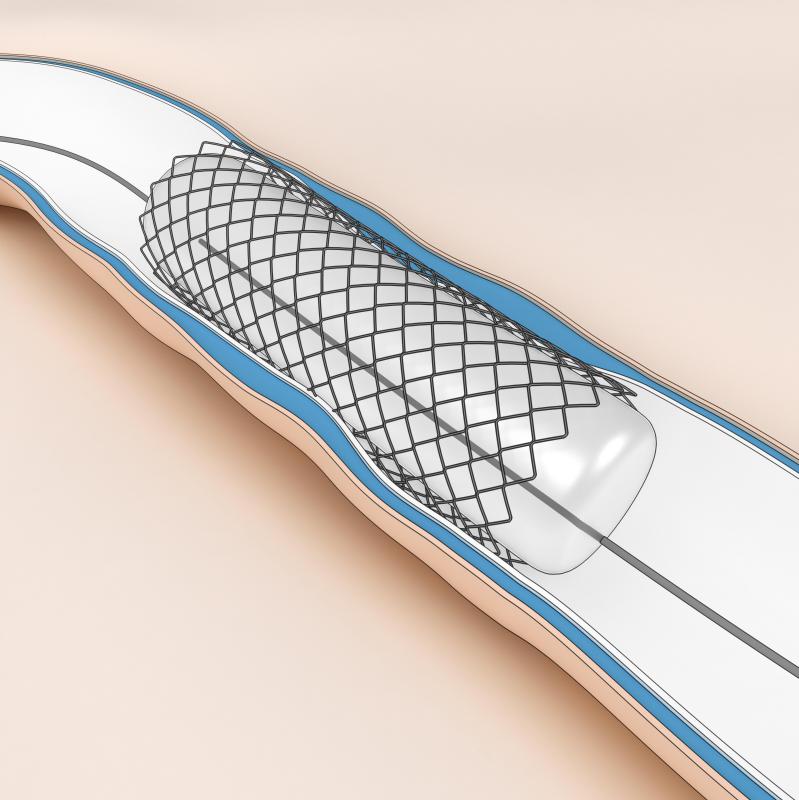At WiseGEEK, we're committed to delivering accurate, trustworthy information. Our expert-authored content is rigorously fact-checked and sourced from credible authorities. Discover how we uphold the highest standards in providing you with reliable knowledge.
What is a Sirolimus Stent?
A stent is a hollow cylinder placed inside the body to support the walls or maintain the normal circumference of an organ. Sirolimus, or rapamycin, is a medication that suppresses the immune system so that the body doesn’t attack a new implant. A sirolimus stent, also called a sirolimus-eluting stent, is a stent that is infused with the medication. This helps to prevent the body from reacting badly to the new stent and causing new blockages. Sirolimus stent implantation is a minimally invasive surgery that usually allows the patient to return to life as normal in a short period of time.
Most of the time, stents are inserted in coronary arteries to correct low blood flow to the heart. They can also be used to protect the function of other tubes in the body if, for instance, they are pressed upon by a cancerous growth. Stents are placed by use of an endoscope and an inflatable balloon fed through a catheter. If the stent is to be inserted in a coronary artery, the catheter is threaded in through a peripheral artery; if the area being stented is in the digestive tract like a bile or pancreatic duct, it may be introduced through the esophagus.

A sirolimus stent is more effective that a stent without medication; it is also more effective than balloon angioplasty alone or a stent that contains the drug paclitaxel. The medication in a sirolimus stent prevents the body from overproducing cells as it heals around the site of the surgery. When a bare stent is used, repeat stenting is more likely to be required because excessive scar tissue is formed which raises the chances of the formation of new blockages.

The placement of a sirolimus stent is a delicate procedure, but generally causes very little trauma to the body. Once the catheter with the endoscope and angioplasty balloon are threaded through the blood vessels or digestive tract to the site of the obstruction, the balloon is inflated; this causes the stent to expand and be pressed into the wall of the artery or duct. Only the site of stent placement and of entry to the body generally require healing.

Recent advances in the production of sirolimus stents have been made that result in the medication being deposited in tiny wells in the metal of the stent instead of covering the entire surface. This leads to less direct contact between the polymer substance that contains the drug and the body tissue; this allows a smaller amount of the drug-polymer to be used, thereby reducing possible risks associated with the medication.
AS FEATURED ON:
AS FEATURED ON:













Discuss this Article
Post your comments